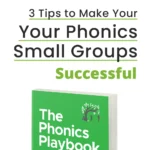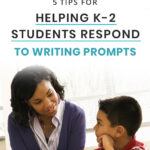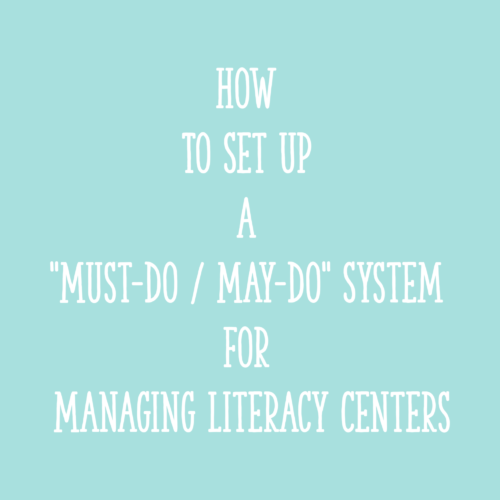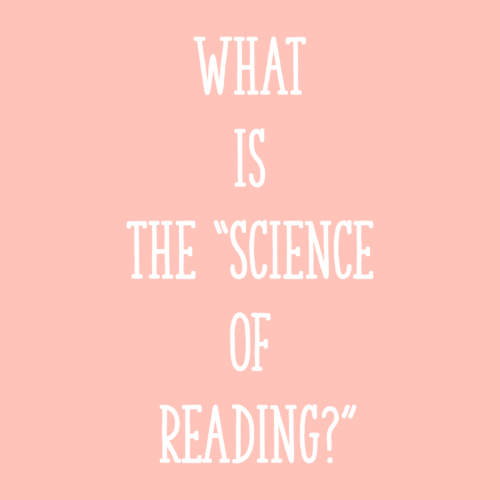In Kindergarten, first grade, and second grade classrooms, finding time for writing can be challenging. Quite often, other subjects and activities – such as read alouds, small group time, math, etc. – fill up every minute! Even with busy schedules filled with lessons, it’s still crucial to find a way to fit in writing.
In this blog post, we’ll explore practical tips to help fit in writing, even when you don’t have time amidst a packed schedule.
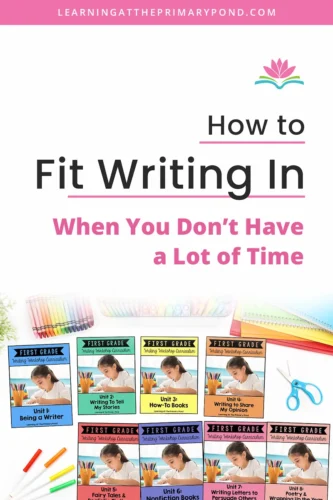
Why Is it Important to Fit in Writing?
Before we jump into the “how,” let’s first start with the “why.” Why is it so important that you fit in writing?
First, writing is a skill set that students will need throughout their education. Having students write is a way to assess what they know, as well as give students practice with expressing their ideas. Many states include a writing component in third or fourth grade standardized testing. We can’t wait until those grades to get kids started. They can and should start earlier!
Second, being able to write is important to students’ success beyond the classroom. Whether it’s writing a quick email or something more involved like an article, many careers require some form of writing.
Third, the act of writing is actually a way to process ideas and thoughts. When you have to write about a text, you must think more deeply about it. And through writing about it, new ideas may become clear. Writing can also help kids and adults process their feelings (i.e. journaling).
Okay, so you want your students to become stronger writers – and ideally, have a little motivation to write, too! But how do you make that happen?
If you’re not sure where to start, check out my writing program, Primary Writing Success. Here are a few reasons I created this writing program for K-2:
- There’s often a lack of sufficient teacher training on writing instruction in undergraduate training programs and beyond.
- Teaching writing is challenging, especially in K-2 when students are still learning so many foundational skills.
- Research has shown the importance of a strong writing foundation and its effects on student success.
- An engaging writing program can also build student confidence and motivation for writing.
If you don’t make at least some time for writing instruction, students will most likely struggle in other subjects because of it. For instance, they’ll have a difficult time doing a written response about what they’ve read in small group if they don’t have a foundation in writing. Students will get stuck trying to write a hypothesis during science time if they haven’t been taught the basics of writing.
On the flip side, prioritizing writing instruction opens up doors for students to focus on the task at hand during these other subjects, instead of being bogged down by a lack of writing skills.
Use A Consistent Time for Writing
There’s so much that goes into writing! Brainstorming, planning, drafting, revising, publishing. And then there are the different types of writing – personal narratives, informational, opinion pieces, letters, biographies, responding to prompts…!
And then on top of all of that, you’re trying to have students use proper grammar?!
The tricky part about fitting in writing is that there is a lot to cover in writing and in all other subjects! As teachers, you’re constantly trying to weigh what to fit in and how to do it!
When we’re trying to fit in writing, it can go in a couple of different directions:
- Option 1: You could try and devote only one day a week to writing time (and then have to make big cuts to other subjects that day.)
- Option 2: You could do a little bit of writing every day (and then only have to make slight adjustments to other subjects each day.)
I would recommend trying for the second option! Having consistency for students allows them (and you) to get more in the swing of things. They know what to expect, and students tend to do better when there are built-in routines.
What Components Should Be Covered During Writing Time?
With Primary Writing Success, you are given all of the materials you’d need to teach writing for the year. The recommended components for a writing block throughout the year would include Core Writing Units, Small Group Writing Lessons (as needed), Writing Prompts, and Grammar Alive.
That may sound like a lot, but you can actually fit it into 1 block of time daily because you don’t use all of these pieces every day.
This Pacing Guide (which each Kindergarten, first grade, and second grade program lays out for you), tells you exactly what to teach during a particular week.
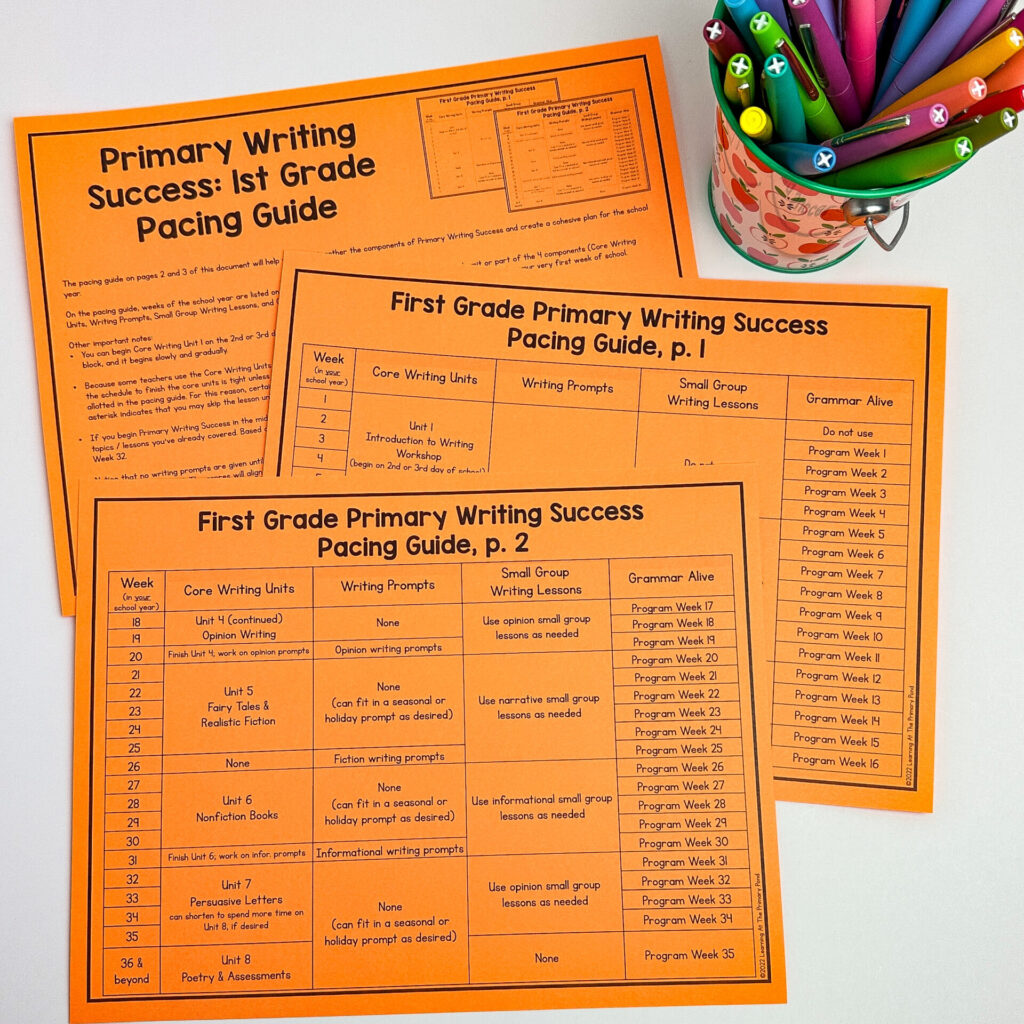
Following a Pacing Guide such as this ensures that you’re covering all of the necessary writing components.
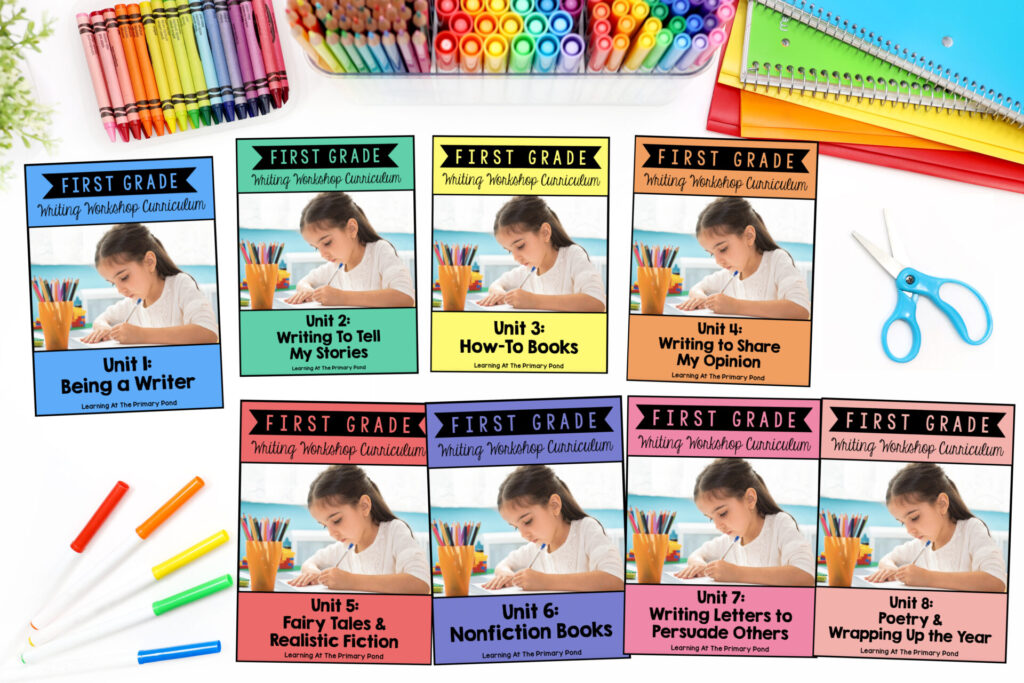
Core Writing Units are the main focus of the program. They:
- are sequential, whole-group lesson plans that provide explicit instruction in specific skills
- cover narrative, informational, and opinion writing (each genre is taught twice throughout the year)
- include embedded assessments
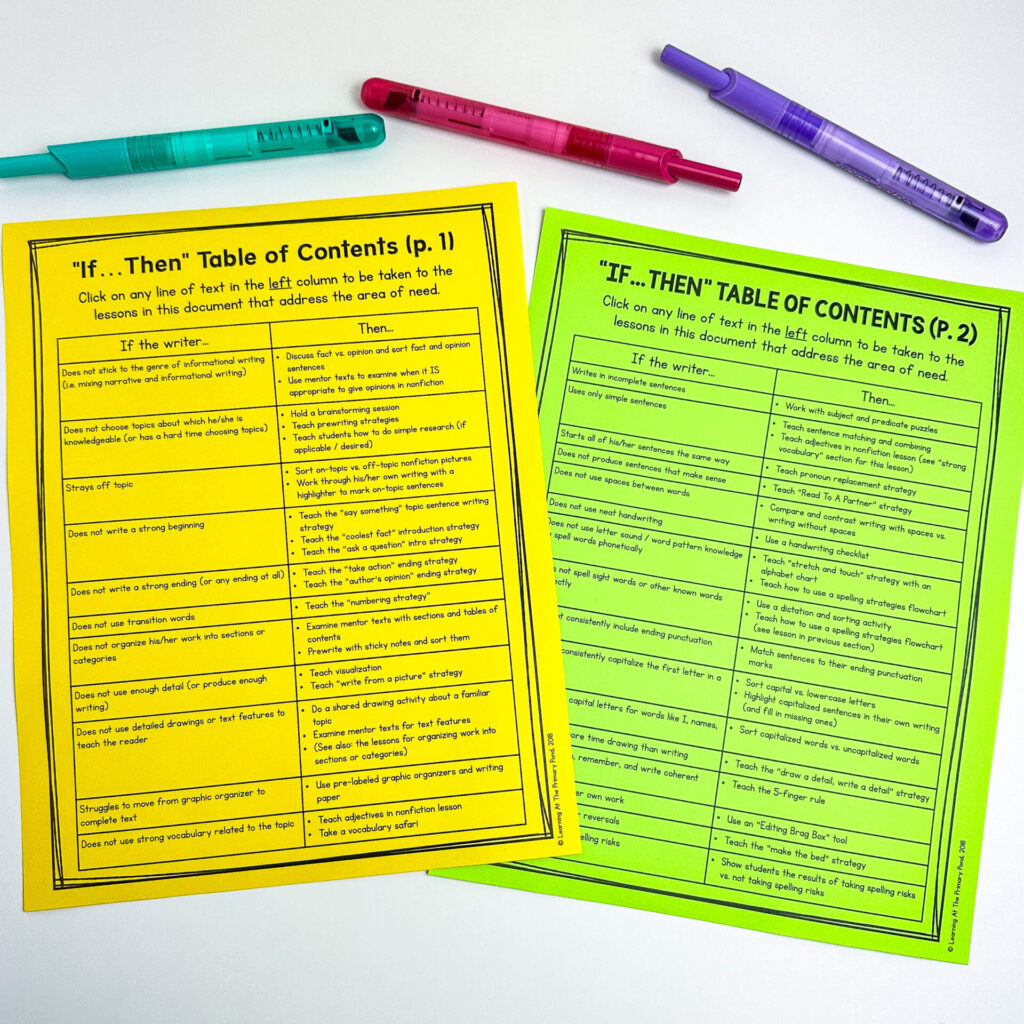
The Small Group Writing Lessons address specific areas where students are struggling. They:
- are targeted “use as needed” lesson plans
- can be taught in a small group setting or they can be used to address a need that the entire class has
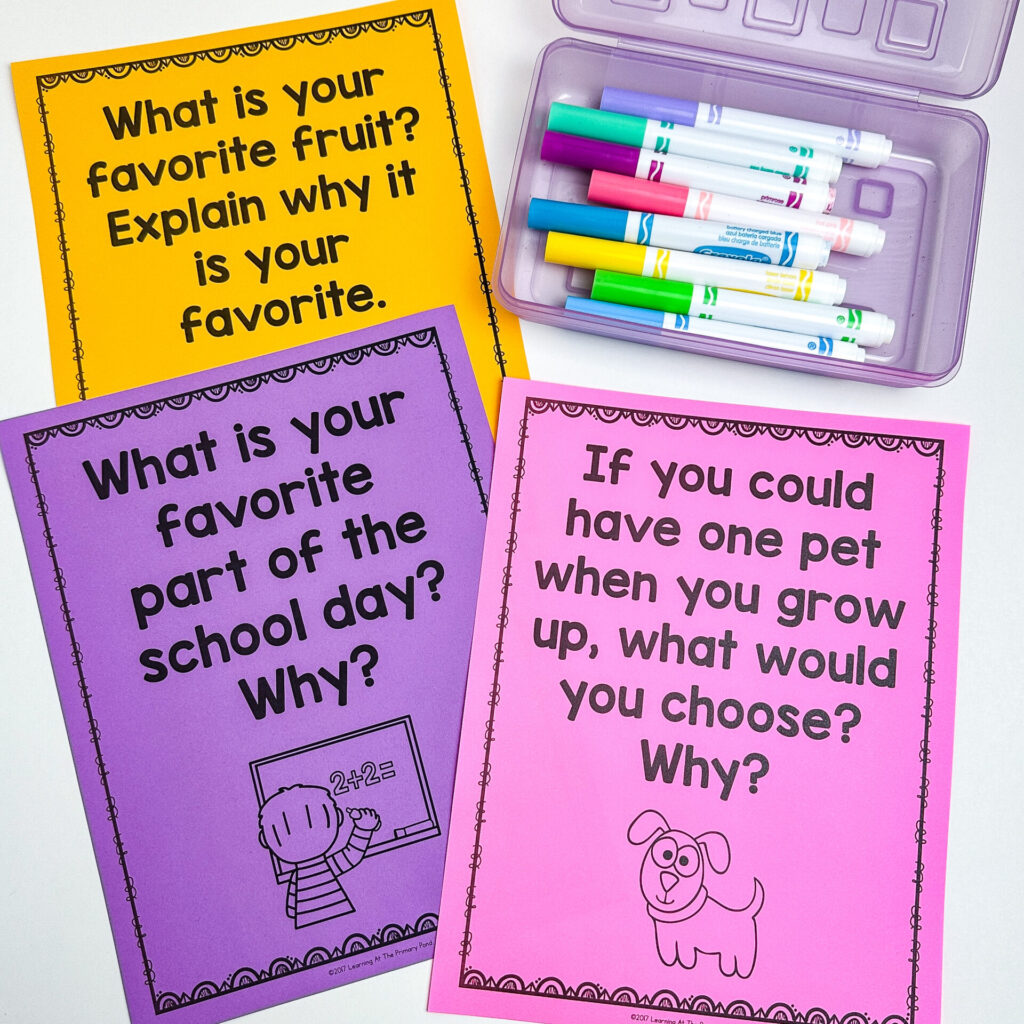
Writing Prompts are specific prompts/questions for students to respond to. They:
- include multiple differentiated versions of each prompt
- cover narrative, informational, opinion, and some optional non-religious holiday and seasonal prompts
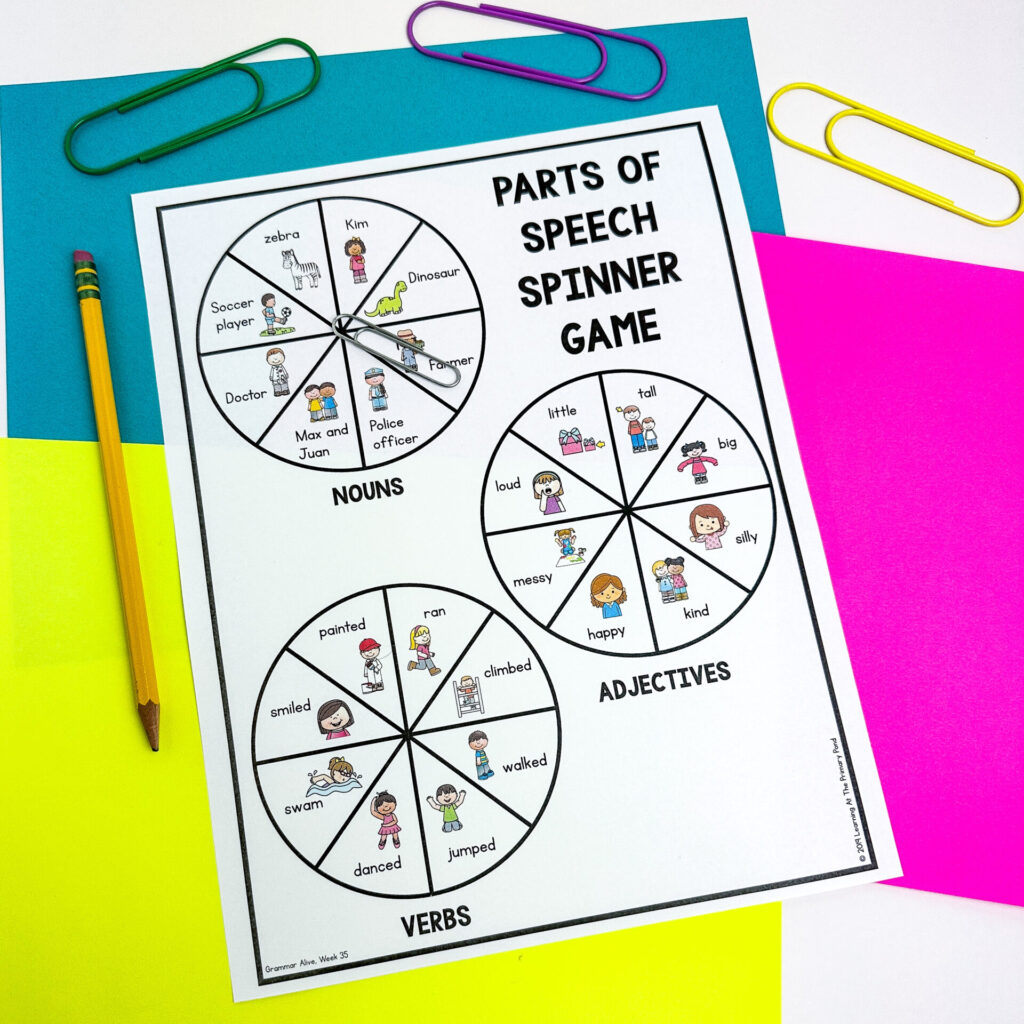
Grammar Alive includes brief lessons and activities for grammar skills. They:
- cover grammar, capitalization, punctuation, and language standards
- completely optional; can be used when time allows
Remember, all of this is included in Primary Writing Success to take the planning part off of your plate!
How Should You Structure Writing Time?
Especially if you are strapped for time, it’s important to make sure every minute counts! Even if you can just find 20-25 minutes per day, that can make a big impact!
Here’s an example of a daily writing block schedule from Primary Writing Success:

I recommend starting writing time with a brief mini-lesson. This could either be a lesson that covers a specific skill in the Core Writing Unit scope and sequence (such as “Writing a Good Beginning,”) or it could be you as the teacher modeling how to respond to a specific writing prompt (like “What is your favorite thing to do after school? Why?”)
After that, students should have some time to write independently. During this time, you can circulate to monitor students, meet with a small group, or confer with a student 1:1 regarding their writing.
If time permits, it’s always nice to wrap up the writing block with a chance for students to either share with a partner or the whole class.
Can you still pull this off if you have less time? Yes – and I know from experience!
One year, I didn’t have control over my schedule, and I was only allowed about 20 minutes of writing time. What I did was to teach minilessons Monday through Thursday (with a little student practice time afterward), and then left Friday as a pure “writing day.” Students worked on their writing, while I met with them and helped them apply the skills we had been working on earlier that week.
Conclusion
I hope the information in this post gave you some ideas about how to fit in writing and structure your writing block. If you don’t have time for a specific “writing time,” you can also fit writing into other subject areas.
- After a read-aloud, have students write a letter to a character in one of the books they’re reading.
- During social studies time, have students imagine they lived during a particular decade. Have them write about a day as a kid during that time!
- In math, students can show how they arrived at an answer through a couple of sentences of explanation.
If you have any other ideas of how to fit in writing, I’d love to hear about them in the comments!
Happy teaching!


